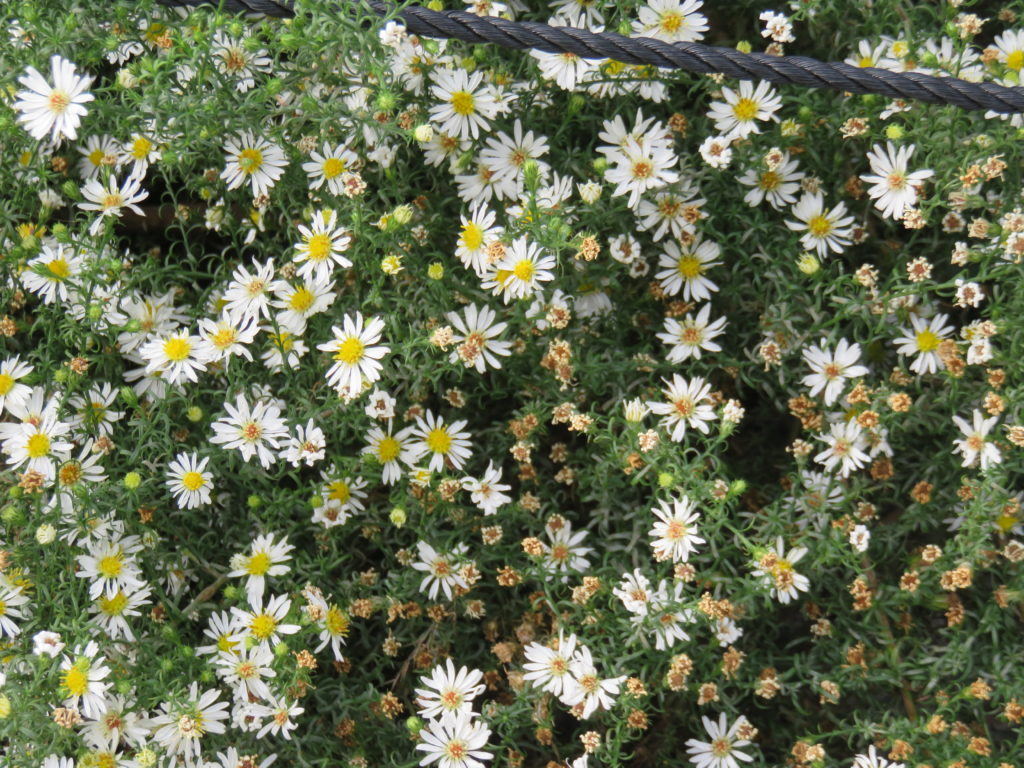
It’s late August and across the Southern Appalachian region White Wood Aster (Eurybia divaricata) are blooming. Their small daisy flowers are often seen blooming in shady woodlands in late summer. They start blooming a week or two later in the New England states and Canada (USDA hardiness zones 3-8).
In a natural woodland Wood’s Aster grows 1 ½ feet to 2 feet tall (2-3 feet in gardens). You can also identify them for their maroon (blackish) sprawling stems. The tiny long-petioled leaves are heart shaped and toothed. The smallish but plentiful white flowers measure 3/4-1 inches wide.
This trouble-free woodland aster grows in average, dry to medium, well-drained soil in part-sun, part-shade, or shade. Established plants are tolerant of dry shade. Good air circulation and an hour or two of morning sun help reduce any outbreaks of foliar diseases. Their numerous flowers attract bees and butterflies and deer don’t appear to bother white wood aster.
Wood’s white aster is available from nurseries selling native plants. Try them in rock and woodland gardens, containers and in flower beds. To increase flower numbers pinch (or mow) back plants 1-2 times in late spring to early summer to develop a compact plant habit.
This woodland aster blooms in summer’s heat and humidity and is highly tolerant to disease and pest problems. In cultivation it tends to self-sow and may become weedy.
Once established, white wood’s aster handles difficult landscape sites including clay soils and dry shade under trees and shrubs or on shaded slopes.
Editor’s note: not to be confused with Wood’s Purple Aster, aka New York aster (Symphyotrichum novi-belgii ‘Wood’s Purple’) which bears 1 to 1 ¼ inch medium violet flowers from mid-late September and grows 14-16 inch high plants.

 Posted in
Posted in 
